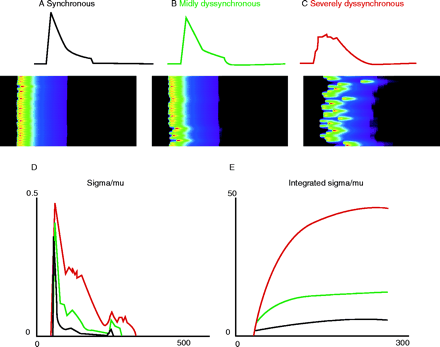
- Institution: Stanford Univ Med Ctr Lane Med Lib/Periodical Dept/Rm L109
- Sign In as Member / Individual
Twenty Years of Calcium Imaging: Cell Physiology to Dye For

Variance and dyssynchrony. The conditions of SR Ca2+ load heterogeneity (and other conditions of triggering heterogeneity) can lead to dyssynchronous activation of Ca2+ sparks. Here, a mathematical model reveals how increasingly dyssynchronous SR Ca2+ release may affect the [Ca2+]i transient and fluctuations of [Ca2+]i. A. Nearly synchronous Ca2+ release and a [Ca2+]i transient over the period of one second. B. Mildly dyssynchronous Ca2+ spark activation (same number of Ca2+ sparks) slows the time-to-peak [Ca2+]i transient, decreases the peak [Ca2+]i level, and is associated with the development of [Ca2+]i noise. C. Severely dyssynchronous SR Ca2+ release produces an even slower rise and smaller peak of the [Ca2+]i transient and this is accompanied by even more [Ca2+]i signaling “noise.” The same number of Ca2+ sparks is activated in panels A, B, and C. D. The time course of the standard deviation is plotted as a function of time (ms) normalized by the mean [Ca2+]i. E. The integral of the signals in D.


